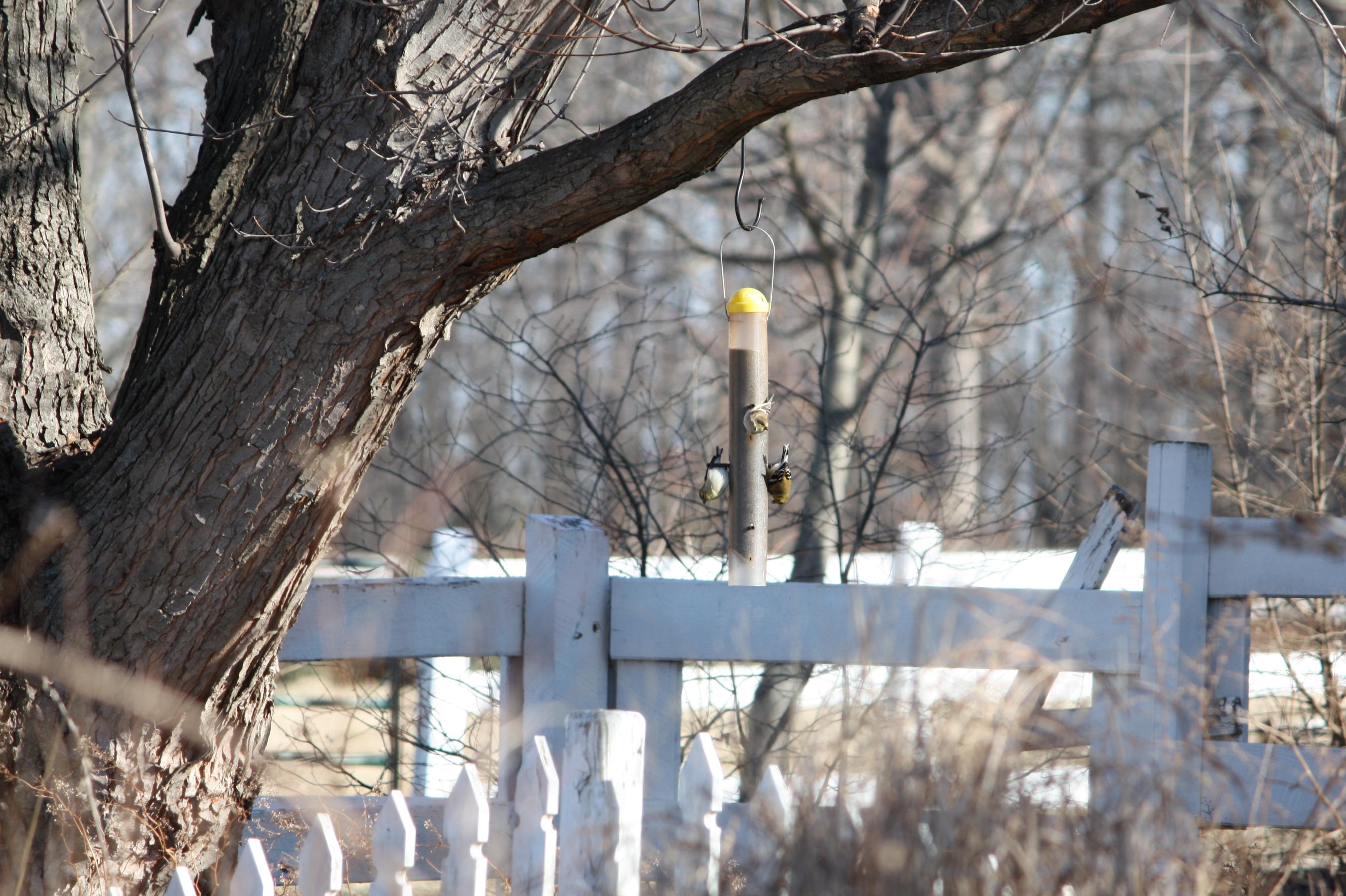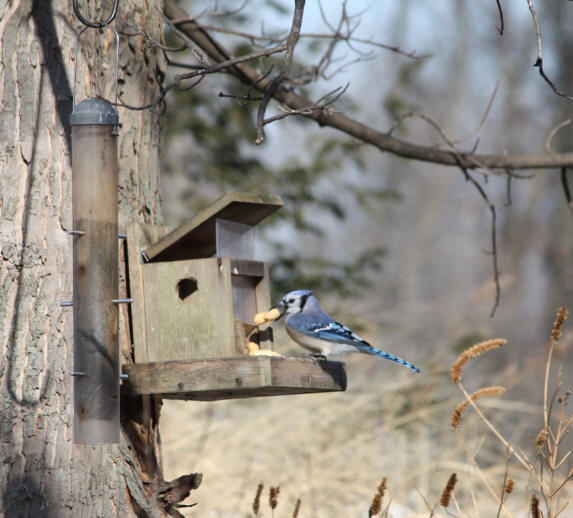Frank Williams
Adams County Master Gardener
 Some of you may remember the movie "Mary Poppins" and dick Van Dyke's delightful rendition of the song "Feed the Birds." Many believe
most, if not all of our birds have departed for warmer climes, but, in fact, many pleasurable breeds stay with us all year long. Other winter varieties join us from the North during the cold months of the year. Now is the time when the birds appreciate a little help from
their friends-the 52 million Americans who the U.S. Fish and Wildlife Service says feed these flying guests to our backyards.
Some of you may remember the movie "Mary Poppins" and dick Van Dyke's delightful rendition of the song "Feed the Birds." Many believe
most, if not all of our birds have departed for warmer climes, but, in fact, many pleasurable breeds stay with us all year long. Other winter varieties join us from the North during the cold months of the year. Now is the time when the birds appreciate a little help from
their friends-the 52 million Americans who the U.S. Fish and Wildlife Service says feed these flying guests to our backyards.
The Fun of Bird feeding
The point of this article is to describe the pleasures and rewards of inviting these critters to our yards. For me, one of the finest winter pastimes is sipping a hot cup of coffee at the breakfast table or soup for lunch and observing the
birds literally dive bombing the birdfeeder to get at the seed that sustains them through winter's chill. Cardinals, chickadees, finches, woodpeckers, and nuthatches frequent our seed or suet feeders throughout the season.
Locating the Feeder, and Types Available

Should you be enticed to give this hobby a try, and chances are you will if you are a gardener, here are a few hints for beginners. First, pick a good location, one that provides an easy observational vantage point for you. Birds also like
protection so trees (especially evergreens) and larger bushes should ideally be nearby. Think also of easy access to the feeder in foul weather so that it is not a survival test for you to fill and clean the feeder. Second, choose the type of feeder that will work for you.
Any hardware store or nursery/supply store will likely have a wide variety of types and materials.
The basic three categories are tray feeders, hopper feeders, usually hung from a branch, patio fixture or wall, and tube feeders, normally used for smaller birds. I have found that a metal hopper feeder is sturdy, weather resistant to rain
and decay, and easy to clean. Tray feeders for ground birds such as juncos and mourning doves are easy to set out-even on top of crusted snow. However, your squirrels may devour the seed more quickly than the birds.

Tube feeders are used primarily for small seed such as Niger. Speaking of squirrels, I am now devoted to hopper feeders on which birds can feed only from the ledge, especially a ledge which can be adjusted to close when other unwanted
animals descend upon it.
Selecting your Bird Feed
Now, what shall we feed our birds? Most of our winter visitors especially like black oil sunflower seed, and it provides much-needed energy to fight off the cold. Niger, a black seed, adored by finches and other small birds, is light, tiny
and expensive, so pour carefully. A winter-feeding station should also include suet for woodpeckers, nuthatches, and chickadees. To start easily, put some black oil sunflower seed in a hopper-type feeder and, after some time, the birds will join you. Many people do not
recommend kitchen scraps thrown on the ground because of speedy decomposition and the attraction of unwanted creatures. I agree.
Cleaning the Feeder
This last comment leads to cleanup procedures for your bird feeder and surrounding area. Basically, this is pretty simple. Rake up seed shells under the feeder, and don't allow scraps (suet, etc.) to stay around too long-especially in warm
and wet weather. If your feeder itself begins to look "scummy," scrape it clean and, weather permitting, wash with a solution of one part bleach to 9 parts water.
Birds frequently have difficulty finding sufficient water in the cold of winter. Putting some out during days when it is warm enough to prevent freezing helps. An electrical receptacle or immersible heater can be placed in a pan to prevent
freezing.
When to Feed Birds and Landscaping for Birds
Finally the question of when to feed birds and landscaping the garden to attract birds should be briefly addressed. The answer to the first is simple-whenever you like. The greatest need for the birds is winter, when insects and seeds on the
ground are least accessible. But, many of us put out small amounts of feed throughout the summer-just for the delight of noting the presence of birds in the yard.
The latter, that is, attracting birds through landscaping includes planting small trees such as the hawthorn, the berries of which will attract the birds all winter. Certain native flowers, such as coneflowers, enhance the landscape; allow
them to go to seed and look for the winter birds to enjoy them.
Many of those same birds that live here year round will also enjoy your yard and garden through the growing months of the year and will eat unwanted insects. So, try, enjoy, and profit from feeding the birds and smile as you think of Dick
Van Dyke and his inimitable rendition of "Feed the Birds."
Read other articles on birds, wildlife & beneficial insects
Read other gardening articles by Frank Williams